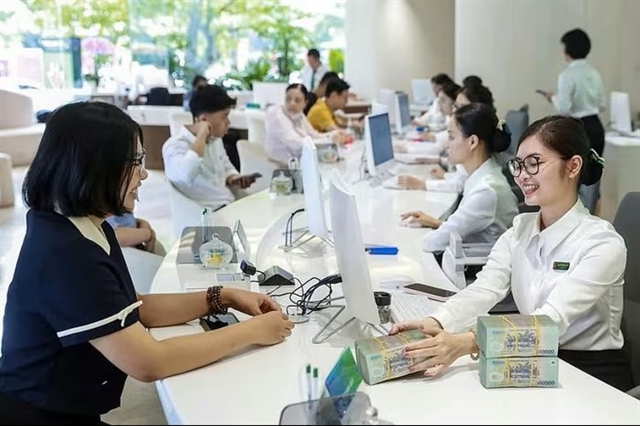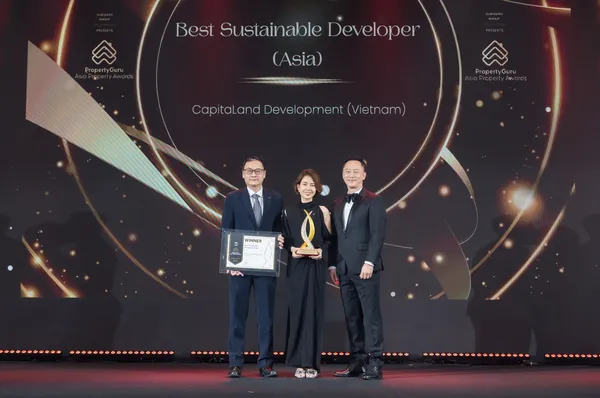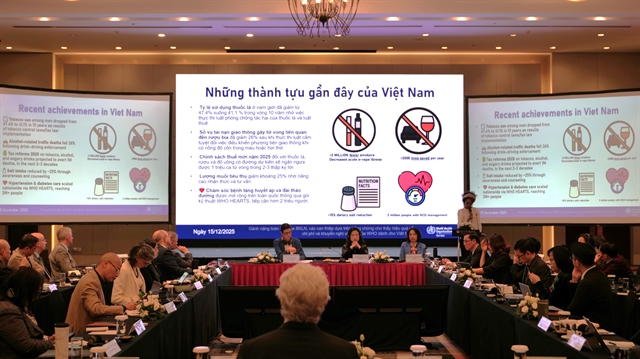 Society
Society

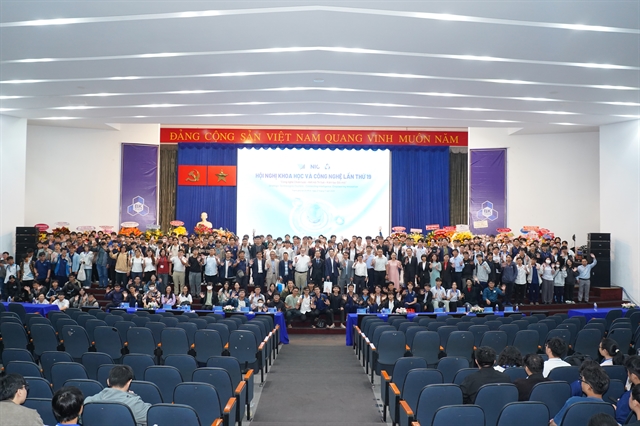
|
| More than 2,000 international and domestic delegates attend the 19th Science and Technology Conference at HCM City University of Technology on November 21. — Photo courtesy of HCMUT |
HCM CITY — More than 2,000 international and domestic delegates convened in HCM City on November 21 for a major science and technology conference, exchanging research insights, exploring emerging technological trends and policy directions, and forging strategic partnerships to advance Việt Nam’s innovation ecosystem.
The HCM City University of Technology (HCMUT), under Việt Nam National University-HCM City, opened its 19th science and technology conference, themed “Strategic Technologies Clusters – Connecting Intelligence – Creating Innovation.”
Speaking at the event, Prof. Dr. Mai Thanh Phong, president of HCMUT, said the university aims to build a dynamic platform for academic exchange amid rapid global technological transformation.
“The world is witnessing unprecedented technological shifts. No nation or organisation can address major challenges alone without connection, sharing and mutual learning,” he said.
Phong stressed Việt Nam’s long-term strategic vision – becoming a high middle-income economy by 2030 driven by science, technology and innovation, and achieving high-income status by 2045 through major investments in research infrastructure and frontier technologies.
With nearly 70 years of development, the university continues to play a pioneering role in training high-quality human resources and advancing technological solutions in fields such as AI, semiconductors, materials science, biotechnology and digital infrastructure.
It aligns its research programmes with the Government’s priority technology agenda.
This year’s conference is one of the university’s largest academic events, featuring 57 scientific sessions (including 54 international sessions), with 1,199 papers submitted by research groups worldwide.
It gathers 2,085 delegates, including 372 international experts and more than 1,700 domestic scholars and industry leaders.
Dr. Võ Xuân Hoài, vice president of the National Innovation Centre (NIC), said HCMUT’s initiative demonstrates strong alignment with national priorities outlined in Resolution No. 57-NQ/TW on innovation and digital transformation, and Decision No. 1131/QĐ-TTg on strategic technology products.
He emphasised the country’s growing commitment to frontier technologies: “Artificial intelligence and semiconductors are the core drivers of the digital economy; robotics and 6G will define the future of advanced automation and next-generation connectivity; and renewable energy will underpin sustainable development,” he said.
Calling the conference a strong example of the “Triple Helix” model connecting Government, academia and industry, he noted the participation of experts from North Carolina State University, UNIST, Qualcomm and VNQuantum.
He said NIC will continue to support applied research, technology transfer and innovation through its “lab-to-market” approach to accelerate real-world applications.
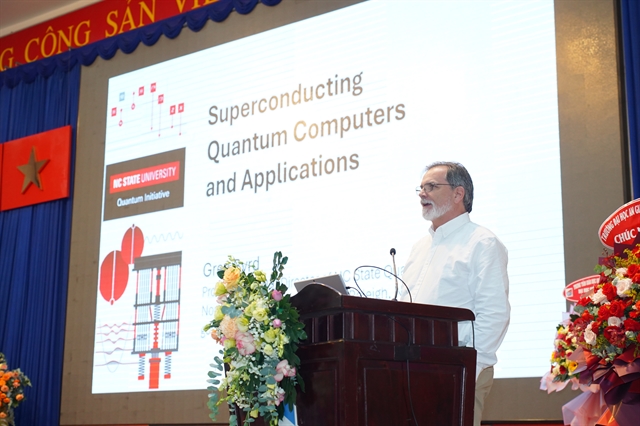
|
| Prof. Greg Byrd, Associate Department Head of Electrical and Computer Engineering at North Carolina State University, speaks at the conference held in HCM City on November 21. — Photo courtesy of HCMUT |
The conference also features a keynote presentation by Prof. Greg Byrd, Professor and Associate Department Head of Electrical and Computer Engineering at North Carolina State University.
He highlighted rapid progress in quantum technologies and explained key principles of quantum computing, including entanglement and the five core requirements for building functional quantum computers.
“These systems depend on large dilution refrigerators and specialised cryogenic equipment,” he said, discussing current superconducting technologies.
Progress in software and hardware is advancing rapidly, he said.
“There’s lots to do, and the community is growing.”
Quantum technologies hold promising applications ranging from materials science and pharmaceuticals to financial modelling, logistics optimisation and machine learning, he added.
The conference takes place as countries worldwide intensify competition in emerging technologies central to the Fourth Industrial Revolution.
HCMUT has set a goal of becoming a leading regional centre for science, technology and innovation by 2035, with a vision to 2045, guided by Resolution 57-NQ/TW.
The university has identified six priority strategic clusters, including AI, semiconductors and 6G, unmanned autonomous vehicles and robotics, quantum technologies, next-generation renewable energy, and high-speed railway systems.
In parallel, the VNQuantum Summit, held during the conference as part of the International Year of Quantum Science and Technology, brings together international experts to discuss quantum communication, algorithms, machine learning and applications in secure networks, remote sensing and advanced computation.
By convening global research leaders, HCMUT seeks to strengthen collaboration, advance technology transfer and train the next generation of high-quality engineers and scientists, contributing to the country’s ambition to play a greater role in the international science and technology landscape.
As part of the programme, the quantum public lecture series “Quantum School”, jointly organised by HCMUT and the Việt Nam Institute for Advanced Study in Mathematics (VIASM), will take place from November 21–23 at HCMUT.
The three-day programme gathers around 80 participants, including students, postgraduate researchers, mathematicians and scientists interested in quantum technologies.
It covers foundational mathematical and physical principles, quantum programming and algorithms, and emerging topics in quantum hardware. — VNS

